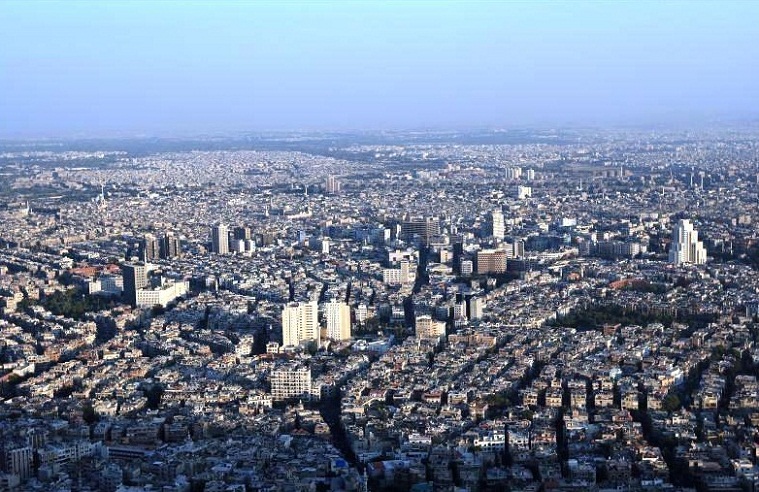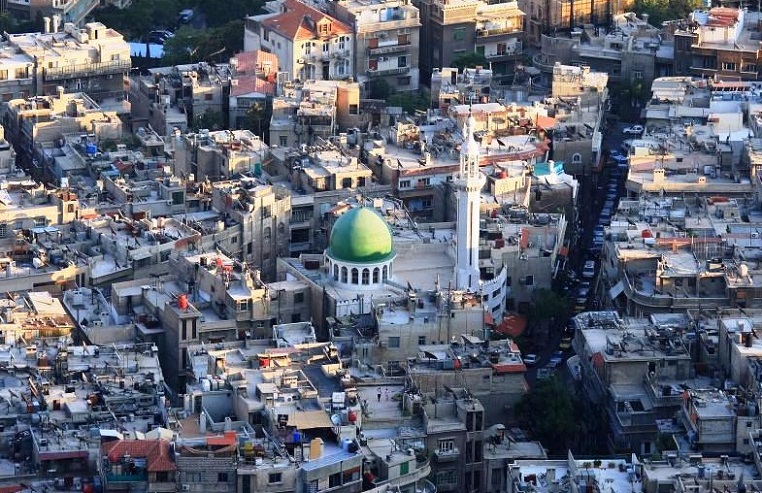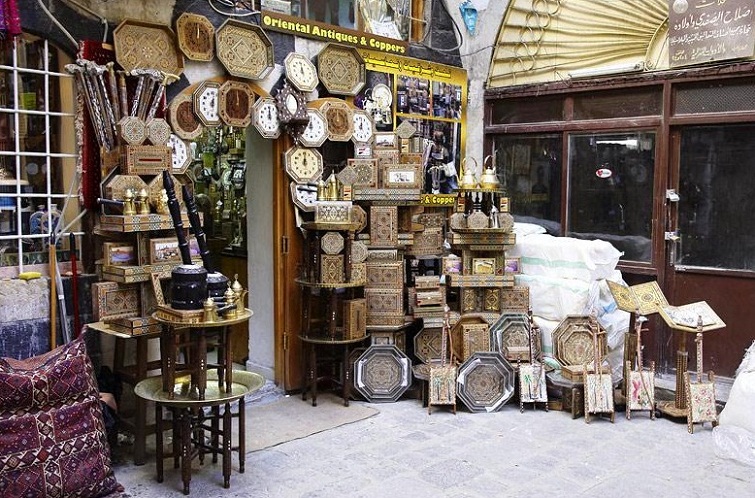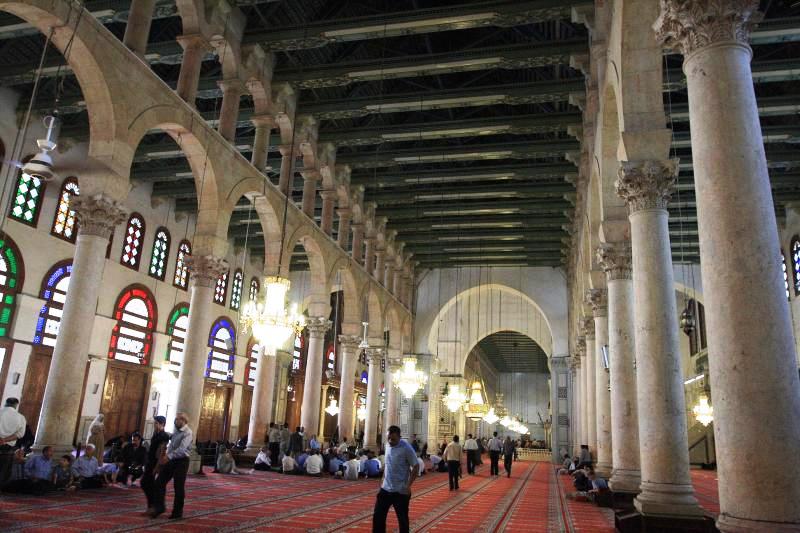Destinations / Top cultural destinations in Asia / Damascus in Syria
Ads
Damascus in Syria
Sponsored Links
Located in south-east Asia, about 80 kilometers away from the Mediterranean coast, Damascus is the capital city of Syria. Founded in approximatively 2500 BC, Damascus is considered the oldest continuously inhabited city in the world, older than Al Fayyum, and Gaziantep, as well as the oldest capital in the world. The name of the city has an Aramaic origin, as Damas in Arabic means water. The current population accounts nearly 4.5 million inhabitants. The city is large and animated, with a great old center with narrow winding streets and large covered Suq sites.
Standing in the Ghutah depression-oasis, on a plateau at 680 m above sea level, at the foot of the Anti-Lebanon mountains, Damascus is included on a geographical map for the first time by Pharaoh Tutmes III, who annexed its territory in the fifteenth century BC. By the ending of the first millennium BC, Damascus became the capital of the Aramaic kingdom. In fact, the first building here was a sacred altar in honor of their god, Hadad. The city was later destroyed by the Assyrians, led by Tiglath-Pileser II in 732 BC and is mentioned as an Assyrian provincial residence until the rule of Asurbanipal (668-627 BC). It is conquered by the Persians in 530 BC, becoming the capital of Trans-Euphrates area, however its importance declined during the Hellenistic period. It was annexed to the empire of Alexander the Great in 333 BC. Under Romanian and Byzantine rule (64 BC - 635 AD) it reborn as Phoenix, and in the year of 635 it was conquered by the Arabs and became the capital of the Caliphate that stretched from the Atlantic coast and Spain all the way to the Indus Valley and Central Asia. After 750, the capital of the Caliphate moved to Baghdad and the city remained as an Arabic and, farther on, Ottoman province capital, being later occupied by Selim I in 1516. By that time, it was the starting point for caravans, Muslim pilgrimage to the holy places of Mecca and Medina. After the Second World War, Damascus becomes the Syrian capital, which has gained its independence in 1946.
Conquered by the Romans, Byzantines and Ottomans throughout history, Damascus is now an important economic, cultural, commercial and political centre. For this reason, local authorities plan to make the most of this opportunity in order to develop tourism by organizing various cultural activities through which tourists will discover interesting aspects about Arab culture, traditions and customs that are hundreds of years old. Visitors are offered a wide range of new and old buildings, as all civilizations that have ruled here have left their mark on the place.
Modern Damascus has rebecome the "pearl of the Orient", as it was called by the Roman Emperor Julian in the fourth century. The old town area is one of the most important locations that one should definitely not miss. It is dominated by fortress towers, villas and covered mausoleums, which will make you forget about the infernal traffic and recent buildings that seem less inspired. Here, there are various markets, several mosques and shrines, among which the most important is the Omayyad mosque, surrounded by massive walls. On the site of the former altar in the honor of the god Hadad, there was initially built an impressive temple dedicated to Jupiter. This was later replaced by a Christian basilica with a synagogue in its proximity. The basilica in turn was replaced by an omeyyada mosque, a true masterpiece of Islamic art that resisted until today. The three minarets in different styles open onto a courtyard, bounded by a massive wall and columns on the sides, while the beautiful mosaics, engravings, sculptures and fittings that adorn the building make it the greatest mosque in the city. Here, there are many valuable relics among which it is said to keep the Head of St. John the Baptist, called by the Muslims Yahua prophet. Besides, according to popular belief, the patriarch Abraham was born in Damascus and that is also the place where Abel was killed by his brother, Cain. Anania Chapel in the eastern part of the city evokes Saul receiving his sight, who, after persecuting Christians, became Apostle Paul. In the Middle Ages, Damascus has played an important role in medicine. In 1154, the Maristan Nuri hospital was founded, one of the most modern establishments of this kind at that time. Here, doctors of different fields worked, with a huge library as source. If you want to relax in the old city area, there are several locations where you can drink tea right behind Omayyad Mosque, sipping tea for hours and enjoying the ancient setting. Moreover, you can go to a real Turkish bath (hammam). Damascus boasts some interesting museums as well, among which the most important is the National Museum.
Everything located on the Barada river banks belongs to Damascus. Flowing from the Anti-Lebanon area, this narrow but abundant river consists of hundreds of smaller streams, flowing in waterfalls through the gorge Ain al Fijeh. On these fertile lands, Ghouta has emerged, a vast field of gardens and orchards that feeds Damascus. Ghouta is also a place of recreation, with many swimming pools, casinos and sports arenas, highly appreciated by city residents who suffer from dry winds. To the north-west, the city stands on the rocky slopes of Jabal Qassiun. These higher areas of the town are heavily populated and impoverished, except Mouhajarine District, where large and modern buildings overlooking the urban panorama that extends to the green Ghouta.
Sponsored Links
By Maria Morari
Sponsored Links
Others Top cultural destinations in Asia .
Others from Top cultural destinations in Asia
A bustling melting pot of modernity and history, Asia is an enchanting and exotic land, with fascinating places, gorgeous landscapes, welcoming people and intriguing culture.
Check out our selection of the best cultural destinations in Asia to discover and explore the beautiful Asia and its culture!
Check out our selection of the best cultural destinations in Asia to discover and explore the beautiful Asia and its culture!
Images of Damascus in Syria, icons, photos, figures, visions, appearances, illustrations, snapshots, captures, canvas and pictures of Damascus in Syria - Top cultural destinations in Asia
Sponsored Links
Sponsored Links



































